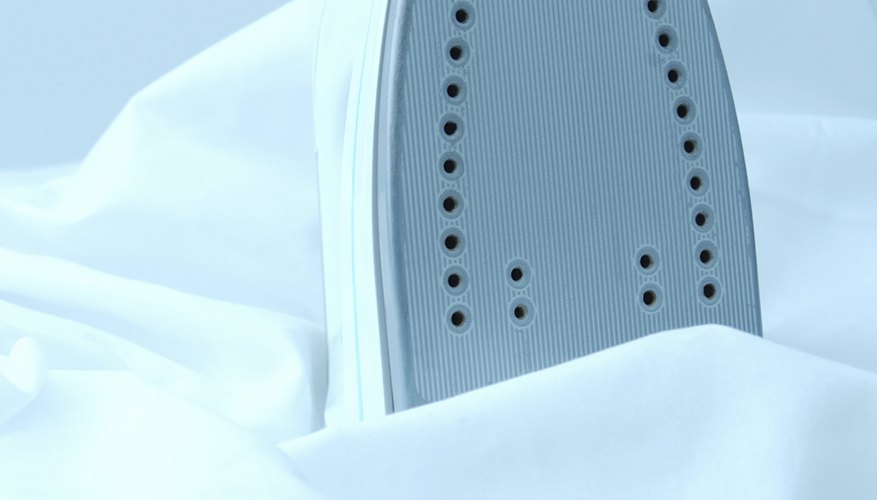All irons do the same job, but they aren't all exactly the same. Their base plates are made from various materials, including ceramics and stainless steel. The type of plate you choose affects how the iron works, its effectiveness over time and how much it costs. It is worth considering the pros and cons of each material before you choose which iron to buy.
Soleplates
The soleplate of an iron is the flat side that comes into contact with the fabric when you iron. It conducts heat to eliminate creases. In the past, most irons had stainless steel or aluminium soleplates; today's plates can also have ceramic or non-stick coatings. Some more expensive models use advanced metals such as palladium. The metal or coating affects the way the iron works on different types of materials and its cost and durability.
- The soleplate of an iron is the flat side that comes into contact with the fabric when you iron.
- The metal or coating affects the way the iron works on different types of materials and its cost and durability.
Ceramic irons
Ceramic irons have a metal or plastic base that is covered with a layer of ceramic. This non-stick surface spreads heat evenly and effectively and gives a smooth ironing experience. These irons are effective on synthetic materials as they are less likely to stick and don't create any static electricity, but they are more expensive than stainless steel models. As a downside, ceramic surfaces can stain if they pick up colours from natural materials, and the coating may crack or peel off over time on cheaper models.
- Ceramic irons have a metal or plastic base that is covered with a layer of ceramic.
- As a downside, ceramic surfaces can stain if they pick up colours from natural materials, and the coating may crack or peel off over time on cheaper models.
Stainless steel soleplates
Stainless steel soleplates are durable and hard-wearing and distribute heat very effectively across the ironing area. This gives them an advantage when ironing heavier natural materials such as cottons and linens; they can also produce sharper creases at a greater heat. The surface may scratch if it catches on metal buttons or zips, which damages the plate and makes ironing less smooth over time. Stainless steel irons are usually cheaper than ceramic models.
- Stainless steel soleplates are durable and hard-wearing and distribute heat very effectively across the ironing area.
Soleplate care tips
Some iron plates come with a self-cleaning catalysis function. This helps keep the plate clean and in good condition. You may still need to clean the plate manually from time to time. Manufacturers recommend that you use warm water and a soft cloth and that you avoid abrasive cleaners that might damage the plate -- you usually find cleaning instructions in the documentation that comes with the iron. You can extend the life of a stainless steel soleplate by not ironing over buttons and zips.
- Some iron plates come with a self-cleaning catalysis function.
- Manufacturers recommend that you use warm water and a soft cloth and that you avoid abrasive cleaners that might damage the plate -- you usually find cleaning instructions in the documentation that comes with the iron.
